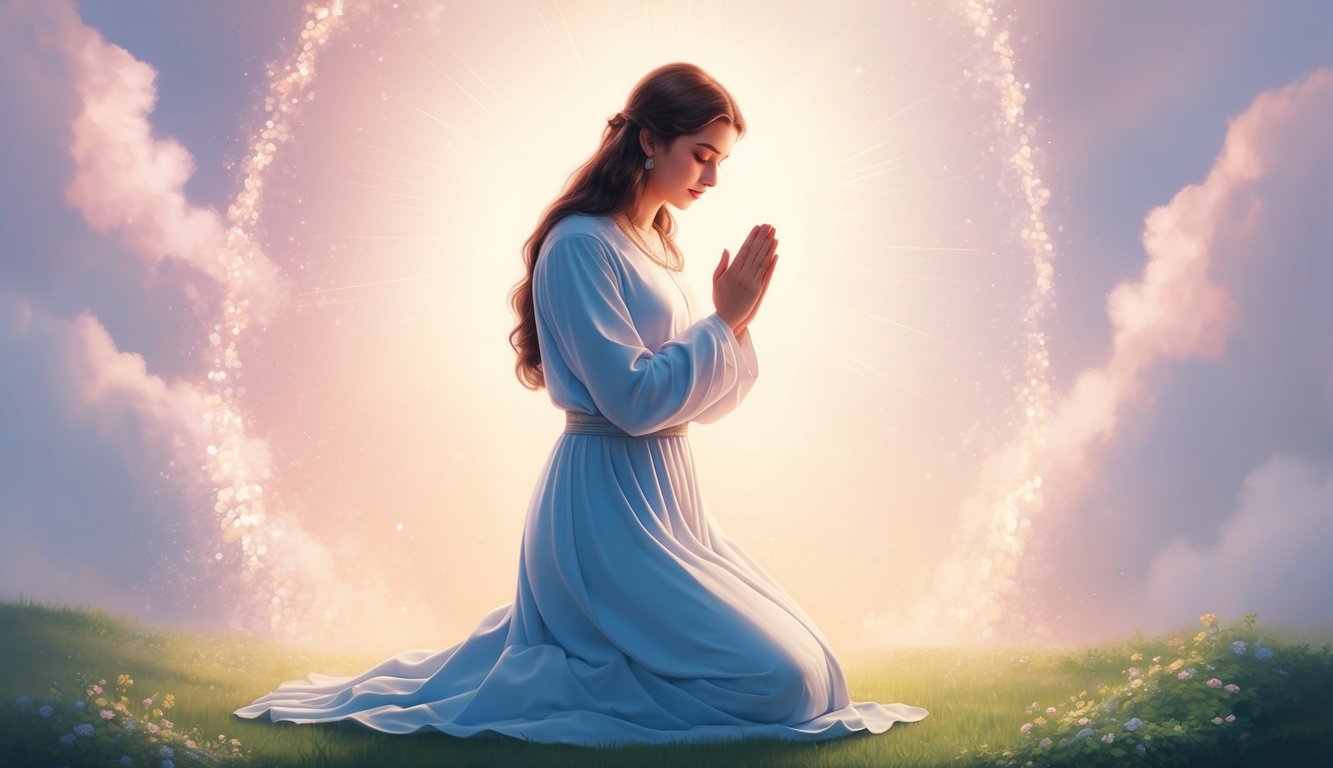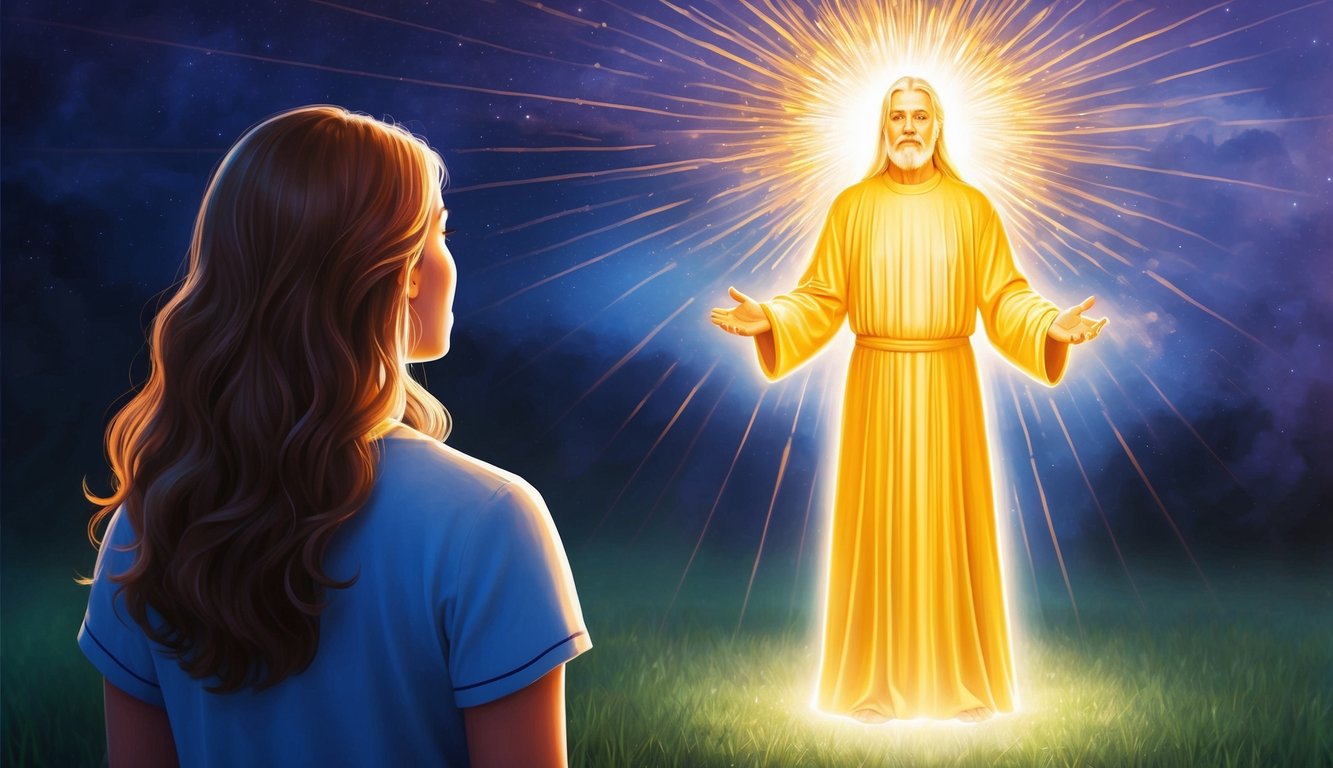Don’t Miss Out On This Unique Astrological Opportunity
Are you tired of spinning your wheels and getting nowhere? Simply put, you’re out of sync: you’re out of alignment with your astral configuration.
But: there’s a kind of map that can help you reclaim your alignment. Think of it as your own personal blueprint to success and happiness: a blueprint that will help you live your most amazing life.
Get started here.
When you think about Mary, the Mother of Jesus, you might picture a young and devoted woman.
Many Christian traditions suggest that Mary was likely a teenager, around 12 to 14 years old, when she had Jesus.
Understanding Mary’s age helps you get a better sense of her life and the deep faith she had in her role as the Virgin Mary.
Mary’s story is a cornerstone of Christian tradition, connecting profound faith with the incredible journey of being the mother of Jesus.
Her experience as a young mother during such a significant time in religious history often intrigues and inspires you, making you want to explore more about her life and the events surrounding the birth of Jesus.
Mary’s youthful age didn’t diminish her unwavering faith, as described by Gabriel who called her “highly favoured” and said, “the Lord is with thee,” highlighting her unique place in Christian history.
Exploring her life not only answers questions about her age but also deepens your understanding of her extraordinary journey.
Historical Context
Understanding the age of Mary when she had Jesus involves looking at cultural and historical elements of the period.
Jewish customs of marriage and the influence of the Roman Empire on Israel are key areas to consider.
Jewish Customs and Marriage
During Mary’s time, Jewish customs greatly influenced life, including marriage practices.
Girls often married in their early to mid-teens, around 12 to 15 years old.
This was considered a suitable age for marriage and starting a family.
Joseph, who was from Nazareth in Galilee, likely followed these customs when becoming engaged to Mary.
Betrothal was a binding agreement, more significant than modern day engagement.
Historians suggest that Mary was probably in this typical age range when she gave birth to Jesus.
The traditions of the Jewish community at that time provide valuable insights into Mary’s likely age.
Although exact records are not available, the cultural norms help us estimate.
Roman Empire and Israel
The Roman Empire had a significant presence in Israel during Mary’s lifetime.
It exerted a lot of influence over the region’s political and social structures.
Roman laws and local Jewish customs sometimes intersected, affecting daily life.
This period was marked by Roman control, which impacted Galilee, where Mary and Joseph lived.
The census ordered by the Romans is one reason cited for Joseph and Mary’s journey to Bethlehem.
Despite their strong rule, the Roman Empire allowed Jewish customs to remain largely intact.
Both Jewish and Roman influences laid the groundwork for understanding the circumstances surrounding Mary’s life and her age at the time of Jesus’s birth.
Such historical context gives more depth to the narrative in the Bible.
Biblical Narratives

In exploring how old Mary was when she had Jesus, it helps to look at the biblical texts that tell her story.
This includes the stories of the Gospels and the prophecies from the Old Testament.
Gospel Accounts
The Gospels of Matthew and Luke provide key insights into the birth of Jesus. Matthew emphasizes Joseph’s perspective: his concerns and the angel who reassures him about Mary’s miraculous pregnancy.
Meanwhile, Luke focuses more on Mary, highlighting a visit from the angel Gabriel.
Gabriel tells her she will conceive Jesus through the Holy Spirit, emphasizing her role as a virgin.
Additionally, you read about Mary’s bond with her cousin Elizabeth.
Elizabeth is also experiencing a miraculous pregnancy with John the Baptist, and her story adds to the narrative of divine intervention.
These accounts give you important context on Mary’s situation and her circumstances when Jesus was born.
Prophecies and Foretelling
The Old Testament has prophecies that many Christians believe foretold the birth of Jesus.
Texts in Isaiah speak of a virgin who would bear a child named Emmanuel, meaning “God with us.” These prophecies are often referenced in the Gospels to show that Jesus’ birth fulfills ancient promises.
You can see the connection between these prophecies and the narratives in Matthew and Luke, as they stress that Mary’s experience aligns with earlier predictions.
Understanding these prophecies helps shed light on the spiritual significance of her role.
Through these scriptures, the importance of Mary’s story is woven into the greater tapestry of biblical history.
The Annunciation of Mary
The Annunciation of Mary is a key event where the angel Gabriel delivers a divine message to Mary, the Virgin Mother of Jesus.
Known for her obedience and trust, Mary responds with faith and humility, leading to the joyful expression known as the Magnificat.
Angel Gabriel’s Message
The Annunciation was a pivotal moment in the Bible.
The angel Gabriel appeared to Mary, greeting her as the “Highly Favored” one.
He revealed that she would conceive a son by the power of the Holy Spirit, and her child would be called Jesus, the Son of the Most High.
This message was astonishing because Mary was a virgin, but Gabriel reassured her of God’s plan, emphasizing Mary’s important role as the Mother of God.
Mary’s Response
Faced with Gabriel’s message, Mary showed remarkable obedience and trust.
Despite the extraordinary nature of the news, she accepted her role with humility, saying, “I am the Lord’s servant.” Mary’s willingness to fulfill God’s plan demonstrates her strong faith and commitment.
Through this response, she became a model of devotion and acceptance for Christians, inspiring them to trust in God’s will, even in uncertain circumstances.
The Magnificat
The Magnificat is a hymn of praise spoken by Mary after her encounter with Gabriel.
It expresses deep gratitude and joy for God’s blessings.
Mary exalts the Lord’s greatness, celebrating His mercy and strength.
The Magnificat highlights themes of justice and the lifting of the humble, reflecting Mary’s awareness of God’s mighty deeds.
It serves as an enduring testament to her humility and faith, resonating with the faithful pursuing a life of devotion.
Mary’s Life and Legacy

Mary is a central figure in Christianity as the mother of Jesus Christ, the Savior and Messiah.
Her life story and legacy have influenced religious beliefs, art, and culture through centuries, highlighting her roles in events like the Nativity and the Crucifixion, her perpetual virginity, and immaculate conception.
From Nativity to the Crucifixion
Mary’s journey began with the miraculous Birth of Jesus.
As the Mother of the Son of God, she played an essential role in His life.
She is present in key biblical events, from the Nativity in Bethlehem to witnessing Jesus’ first miracle at the wedding in Cana.
Mary stood by Jesus during His ministry, showing unmatched devotion.
At the Crucifixion, she watched as Jesus was nailed to the cross.
Her presence during these events highlights her unwavering faith and love for her son.
This deep connection with both the joyous and sorrowful moments of Jesus’ life underlines Mary’s critical role in the Christian narrative.
Virginity and Immaculate Conception
Mary’s Perpetual Virginity is a key belief in Christianity, signifying her purity.
According to tradition, she conceived Jesus through the Holy Spirit.
This event is known as the Immaculate Conception, preserving her from original sin.
Pope Pius IX defined this doctrine in 1854.
Mary’s virginity has been a symbol of her holy and unique role in salvation.
Pope Pius XII emphasized her pure and sinless nature.
These aspects of Mary’s life have made her an example of faith and devotion for many believers, underscoring her role as a model of purity in Christian doctrine.
Influence in Art and Culture
Mary’s influence extends far beyond theology.
She has been a popular subject in art and culture, depicted in countless paintings and sculptures.
Notable works include the “Virgin and Child,” often portrayed in serene and nurturing scenes.
Artists like Leonardo da Vinci and Raphael have depicted her with reverence and honor.
Mary’s legacy also includes numerous relics housed in churches worldwide, drawing pilgrims and believers.
Her life story has inspired hymns, prayers, and literary works.
Her influence in art and culture reflects her enduring legacy as a symbol of love, hope, and faith.
Veneration and Apparitions

Mary holds a special place in the hearts of many believers through veneration and the accounts of her apparitions.
Her influence is seen in various forms of devotion and significant events witnessed over time.
Mary in Prayer and Song
When you think of veneration, consider the heartfelt prayers and songs dedicated to Mary.
In Catholic tradition, she is deeply respected for her role as the mother of Jesus.
Devotional practices, like the Rosary, involve repeated prayers that express love and reverence for her.
Hymns and songs sung in churches often praise her virtues and kindness, showing how believers feel a personal connection to her.
Whether it’s a quiet prayer or a joyful song, these practices inspire many to reflect on faith and devotion.
This deep sense of admiration is reflected in various forms of artistic expression, from paintings to sculptures, portraying her as a figure of grace and compassion.
The prayer to Mary in Catholicism serves as a way for believers to seek her intercession, trusting in her guidance and maternal care.
Through these devotions, many find comfort, strength, and a renewed sense of faith in their spiritual journey.
Major Marian Apparitions
Marian apparitions have been significant to communities around the world.
At places like Lourdes, Guadalupe, and Fatima, many people have reported visions of Mary.
These sites often become pilgrimage destinations for believers seeking spiritual experiences.
In Lourdes, many visit to pray and seek healing, while Guadalupe is famous for the image of Mary believed to have appeared on a cloak.
In Fatima, visions in 1917 drew global attention.
These events highlight the impact of Marian apparitions on faith and culture.



